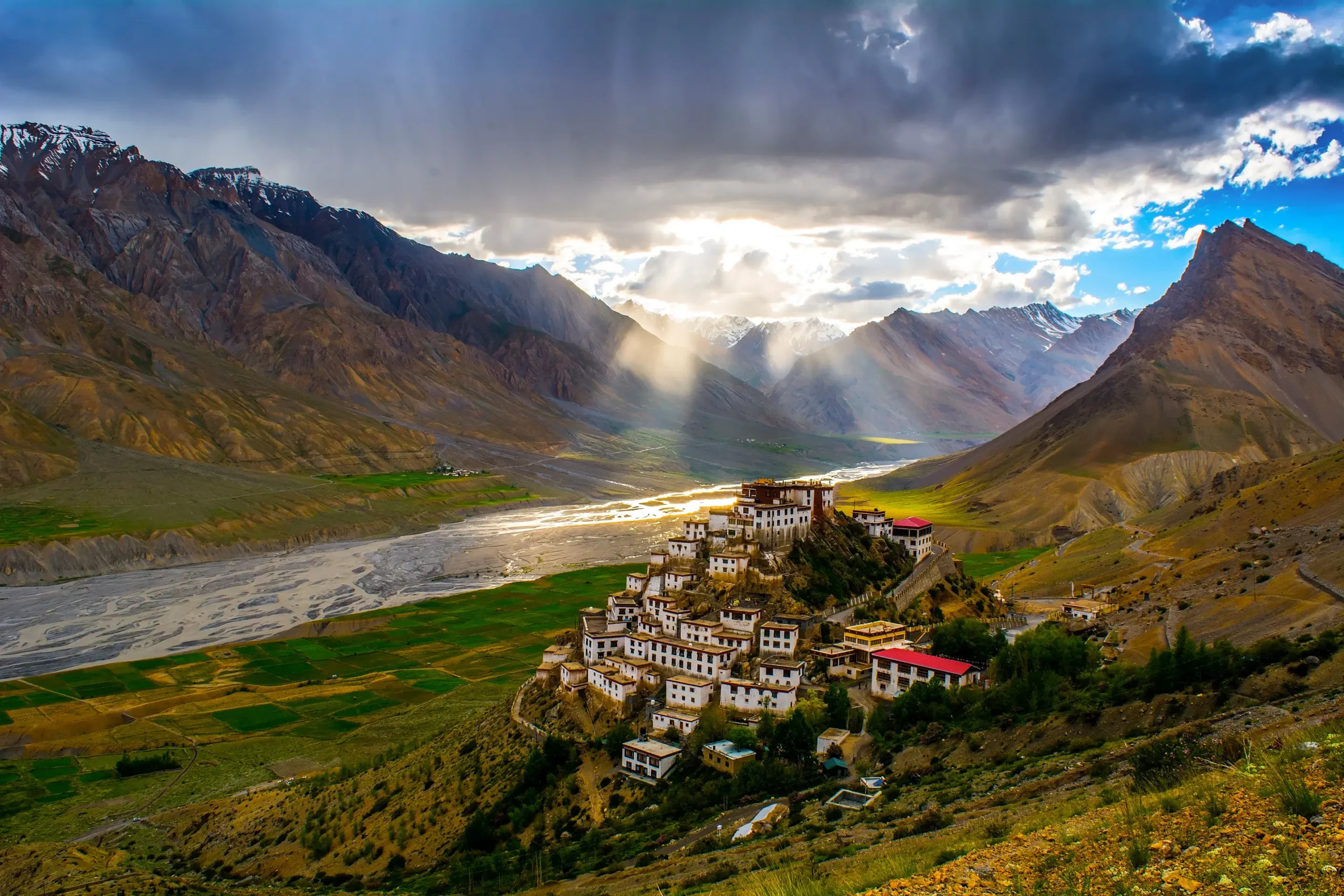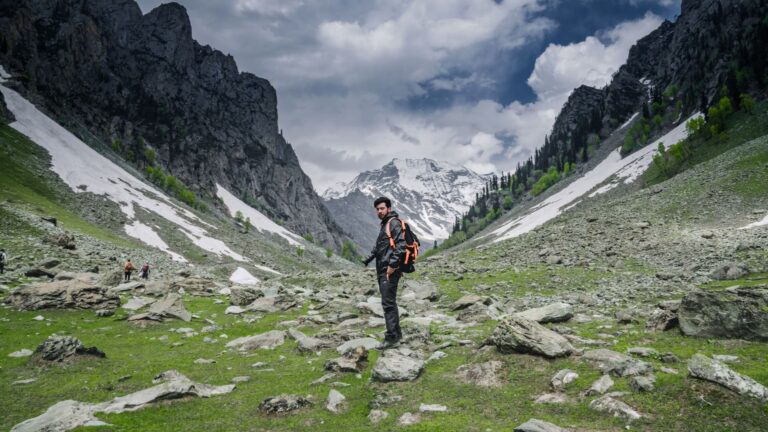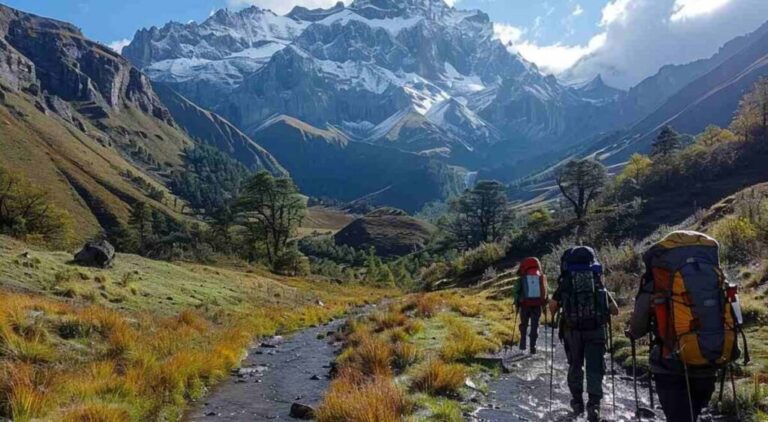The Himalayan region of India is home to some of the most serene and spiritually significant monasteries in the world. Nestled among towering peaks and lush valleys, these monasteries offer not only a glimpse into the rich cultural and religious heritage of the region but also a peaceful retreat for those seeking solace and spiritual rejuvenation. Whether you are a pilgrim, a seeker of peace, or simply a traveler looking to experience the mystique of the Himalayas, these monasteries are must-visit destinations.
1. Tawang Monastery, Arunachal Pradesh
- Overview: Tawang Monastery, also known as the Galden Namgyal Lhatse, is the largest monastery in India and the second-largest in the world. Perched at an elevation of 10,000 feet, this majestic monastery overlooks the Tawang River Valley.
- Highlights: Founded in the 17th century, Tawang Monastery is a center of the Gelugpa sect of Tibetan Buddhism. The monastery houses a massive 28-foot-tall statue of Lord Buddha, an extensive library of rare scriptures, and a rich collection of ancient texts and artifacts.
- Visitor Tips: The best time to visit is during the Torgya Festival, celebrated in January, when the monastery comes alive with vibrant rituals, dances, and prayers.
2. Hemis Monastery, Ladakh
- Overview: Situated in a remote valley in Ladakh, Hemis Monastery is the largest and wealthiest monastery in the region. Established in the 17th century, it is affiliated with the Drukpa lineage of Tibetan Buddhism.
- Highlights: Hemis Monastery is famous for its annual Hemis Festival, which commemorates the birth of Guru Padmasambhava. The festival is marked by colorful mask dances, music, and a large thangka (Buddhist painting) unfurled once every 12 years. The monastery’s museum houses a remarkable collection of Buddhist artifacts, including statues, thangkas, and ancient manuscripts.
- Visitor Tips: Plan your visit during the Hemis Festival, usually held in June or July, to witness the vibrant cultural celebrations.
3. Key Monastery, Spiti Valley, Himachal Pradesh
- Overview: Key Monastery, also known as Kye Gompa, is one of the oldest and most picturesque monasteries in the Spiti Valley. Located at an altitude of 13,668 feet, this ancient monastery offers breathtaking views of the surrounding mountains and the Spiti River.
- Highlights: Established over a thousand years ago, Key Monastery is an important center for Buddhist learning and houses a vast collection of ancient scrolls, paintings, and murals. The monastery’s architecture, with its labyrinth of rooms and corridors, reflects the Tibetan style.
- Visitor Tips: The best time to visit is during the summer months, from June to September, when the weather is pleasant and the roads to Spiti Valley are open.
4. Diskit Monastery, Nubra Valley, Ladakh
- Overview: Diskit Monastery is the oldest and largest monastery in the Nubra Valley. It was founded in the 14th century and belongs to the Gelugpa sect of Tibetan Buddhism.
- Highlights: The monastery is renowned for its 106-foot-tall statue of Maitreya Buddha, which dominates the landscape. The statue symbolizes peace and protection and offers panoramic views of the Nubra Valley. The monastery’s prayer hall, adorned with murals and frescoes, is a serene space for meditation and reflection.
- Visitor Tips: The best time to visit is from July to September when the weather is ideal for exploring the Nubra Valley and the surrounding areas.
5. Rumtek Monastery, Sikkim
- Overview: Rumtek Monastery, also known as the Dharma Chakra Centre, is one of the most important monasteries in Sikkim. It serves as the seat of the Karmapa, the head of the Karma Kagyu lineage of Tibetan Buddhism.
- Highlights: The monastery is renowned for its grand architecture, vibrant prayer wheels, and beautiful murals depicting the life of the Buddha. Rumtek also houses a golden stupa containing the relics of the 16th Karmapa. The serene surroundings and the spiritual ambiance make it an ideal place for meditation and contemplation.
- Visitor Tips: Rumtek Monastery is easily accessible from Gangtok, the capital of Sikkim. Visiting during the Losar Festival, the Tibetan New Year, can provide an immersive cultural experience.
6. Thiksey Monastery, Ladakh
- Overview: Thiksey Monastery is a stunning 12-story complex situated on a hilltop in the Indus Valley. It is often referred to as a miniature version of the Potala Palace in Lhasa, Tibet.
- Highlights: The monastery is known for its impressive architecture, large collection of Buddhist art, and a 49-foot-tall statue of Maitreya Buddha. The morning prayers at Thiksey Monastery are a must-see, offering a deep spiritual experience.
- Visitor Tips: Visit early in the morning to participate in the prayer sessions and enjoy the tranquility of the monastery before the crowds arrive.
7. Phugtal Monastery, Zanskar Valley, Ladakh
- Overview: Phugtal Monastery is one of the most remote and unique monasteries in the Himalayas. Built into a cliffside in the Zanskar Valley, the monastery is accessible only by foot, making it a true pilgrimage for adventurers and spiritual seekers.
- Highlights: The monastery, established in the 12th century, is famous for its stunning location and ancient frescoes. The caves within the monastery have been used for meditation for centuries, and the entire complex exudes an aura of peace and solitude.
- Visitor Tips: The trek to Phugtal Monastery is challenging, so it’s important to be well-prepared. The best time to visit is during the summer months when the trekking routes are clear.
8. Namgyal Monastery, Dharamshala, Himachal Pradesh
- Overview: Namgyal Monastery is the personal monastery of His Holiness the 14th Dalai Lama and is located in McLeod Ganj, Dharamshala. It serves as a major center for the study of Buddhist philosophy and rituals.
- Highlights: The monastery complex includes temples, meditation halls, and a library housing important Buddhist texts. Namgyal Monastery is not just a place of worship but also a hub for learning, where monks engage in debates and teachings. The peaceful environment and the presence of the Dalai Lama make this monastery a significant spiritual destination.
- Visitor Tips: Visitors can attend teachings by the Dalai Lama if they coincide with your visit. The best time to visit is during spring and autumn when the weather is pleasant.
Conclusion
The monasteries in the Himalayas of India are not just religious centers but also places of immense beauty, tranquility, and cultural richness. Each monastery, with its unique history, architecture, and spiritual significance, offers a gateway to understanding the profound Buddhist heritage of the region. Whether you are a devout pilgrim or a curious traveler, exploring these monasteries will leave you with unforgettable memories and a deeper connection to the spiritual essence of the Himalayas.






